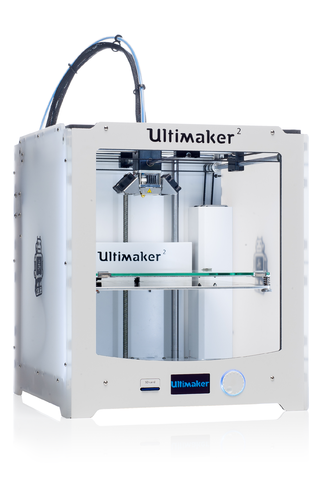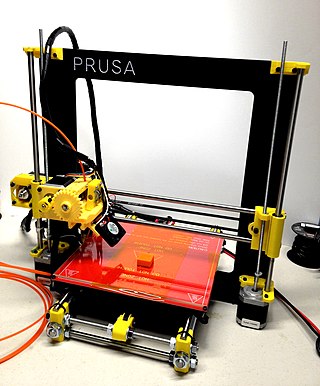Related Research Articles

The FN P90 is a submachine gun chambered for the 5.7×28mm cartridge, also classified as a personal defense weapon, designed and manufactured by FN Herstal in Belgium. Created in response to NATO requests for a replacement for 9×19mm Parabellum firearms, the P90 was designed as a compact but powerful firearm for vehicle crews, operators of crew-served weapons, support personnel, special forces, and counter-terrorist groups.

In firearms terminology and at law, the firearm frame or receiver is the part of a firearm which integrates other components by providing housing for internal action components such as the hammer, bolt or breechblock, firing pin and extractor, and has threaded interfaces for externally attaching ("receiving") components such as the barrel, stock, trigger mechanism and iron/optical sights.

Personal defense weapons (PDWs) are a class of compact, magazine-fed, submachine gun-like firearms designed to fire rifle-like cartridges. Most PDWs fire a small-caliber, high-velocity centerfire bottleneck cartridge resembling a scaled-down intermediate rifle cartridge, essentially making them an "in-between" hybrid between a submachine gun and a carbine.
The ArmaLite AR-18 is a gas-operated assault rifle chambered for 5.56×45mm NATO ammunition. The AR-18 was designed at ArmaLite in California by Arthur Miller, Eugene Stoner, George Sullivan, and Charles Dorchester in 1963 as an alternative to the Colt AR-15 design, a variant of which had just been selected by the U.S. military as the M16. A semi-automatic version known as the AR-180 was later produced for the civilian market. While the AR-18 was never adopted as the standard service rifle of any nation, its production license was sold to companies in Japan and the United Kingdom, and it is said to have influenced many later weapons such as the British SA80, the Singaporean SAR-80 and SR-88, the American Adaptive Combat Rifle, the Belgian FN F2000, the Japanese Howa Type 89 and the German Heckler and Koch G36.

3D printing or additive manufacturing is the construction of a three-dimensional object from a CAD model or a digital 3D model. It can be done in a variety of processes in which material is deposited, joined or solidified under computer control, with the material being added together, typically layer by layer.

Stratasys, Ltd. is an American-Israeli manufacturer of 3D printers, software, and materials for polymer additive manufacturing as well as 3D-printed parts on-demand. The company is incorporated in Israel. Engineers use Stratasys systems to model complex geometries in a wide range of polymer materials, including: ABS, polyphenylsulfone (PPSF), polycarbonate (PC) and polyetherimide and Nylon 12.

The AR-57, also known as the AR Five Seven, is available as either an upper receiver for the AR-15/M16 rifle or a complete rifle, firing 5.7×28mm rounds from standard FN P90 magazines.

The FN 5.7×28mm is a small-caliber, high-velocity, smokeless-powder, rebated, bottleneck, centerfire cartridge designed for pistols and personal defense weapons (PDW) uses, manufactured by FN Herstal. It is similar in length to the .22 WMR and .22 Hornet. Unlike many new cartridges, it has no parent case; the complete package was developed from scratch by FN.

Defense Distributed is an online, open-source hardware and software organization that develops digital schematics of firearms in CAD files, or "wiki weapons", that may be downloaded from the Internet and used in 3D printing or CNC milling applications. Among the organization's goals is to develop and freely publish firearms-related design schematics that can be downloaded and reproduced by anyone with a 3D printer or milling machine, facilitating the popular production of homemade firearms.

Cody Rutledge Wilson is an American gun rights activist, and crypto-anarchist. He is a founder and director of Defense Distributed, a non-profit organization that develops and publishes open source gun designs, so-called "wiki weapons", suitable for 3D printing and digital manufacture. Defense Distributed gained international notoriety in 2013 when it published plans online for the Liberator, the first widely available functioning 3D-printed pistol.

The Liberator is a 3D-printable single-shot handgun, the first such printable firearm design made widely available online. The open source firm Defense Distributed designed the gun and released the plans on the Internet on May 6, 2013. The plans were downloaded over 100,000 times in the two days before the United States Department of State demanded that Defense Distributed retract the plans.

The DEFCAD Charon is an open source 3D-printable AR-15 lower receiver project that was partially inspired by the Fabrique Nationale P90. It began as a design exercise by a DEFCAD user to explore FDM additive manufacturing technology as a means of integrating the P90's ergonomics into a stock for the AR-15, resulting in the WarFairy P-15 stock set.
The Cuomo Mag is a 3D printed AR-15 magazine named after the Governor of New York, Andrew Cuomo, who signed the NY SAFE Act into law banning magazines capable of holding more than 10 rounds of ammunition. It was created by Defense Distributed and made public around January 2013
The AR Lower V5 is a 3D printed lower receiver for the AR-15 rifle. It was created in March 2013 Defense Distributed printed using the Stratasys Dimension SST 3-D printer using the fused deposition modeling (FDM) method.
The Hanuman AR-15 Bullpup which was made public in May 2014 is a prototype AR-15 rifle Bullpup created by WarFairy

Fused filament fabrication (FFF), also known as fused deposition modeling, or filament freeform fabrication, is a 3D printing process that uses a continuous filament of a thermoplastic material. Filament is fed from a large spool through a moving, heated printer extruder head, and is deposited on the growing work. The print head is moved under computer control to define the printed shape. Usually the head moves in two dimensions to deposit one horizontal plane, or layer, at a time; the work or the print head is then moved vertically by a small amount to begin a new layer. The speed of the extruder head may also be controlled to stop and start deposition and form an interrupted plane without stringing or dribbling between sections. "Fused filament fabrication" was coined by the members of the RepRap project to give an acronym (FFF) that would be legally unconstrained in its use.

In recent years, 3D printing has developed significantly and can now perform crucial roles in many applications, with the most common applications being manufacturing, medicine, architecture, custom art and design, and can vary from fully functional to purely aesthetic applications.

The FGC-9 is a physible, 3D-printable semiautomatic pistol caliber carbine, first released in early 2020. Based on the Shuty AP-9 by Derwood, the FGC-9 was designed and first manufactured by a pseudonymous German-Kurdish gun designer named JStark1809.

The Kel-Tec P50 is a FN 5.7×28mm semi-automatic pistol designed in the United States by Kel-Tec in 2021.
References
- 1 2 3D-printed Hybrid AR-15/FN P90 Lower and 12 Gauge Slugs Make Web Debut, outdoorhub, May 22, 2013. (archive)
- 1 2 3 Slowik,Max, Meet the Charon Family of 3D-Printable AR Lowers (PHOTOS) June 3, 2013 Archived 2015-12-28 at the Wayback Machine
- 1 2 3 Slowik,Max, "3D Printing Community Updates Liberator with Rifle, Pepperbox and Glock-Powered ‘Shuty-9′", 1 July 2013. (archive)
- 1 2 Introducing the WarFairy P-15 3D-Printed AR Stock, Guns.com, May 21, 2013. (archive)
- ↑ Charon V3, grabcad, September 3, 2013. archive
- ↑ Shanrilivan, "WarFairy Charon V0.2B released!′", 29 Apr 2013.
- ↑ Leghorn, Nick, "Coming Soon: 3D Printable AR-15 Lower with P-90 Style Stock", 21 May 2013. (Archive)